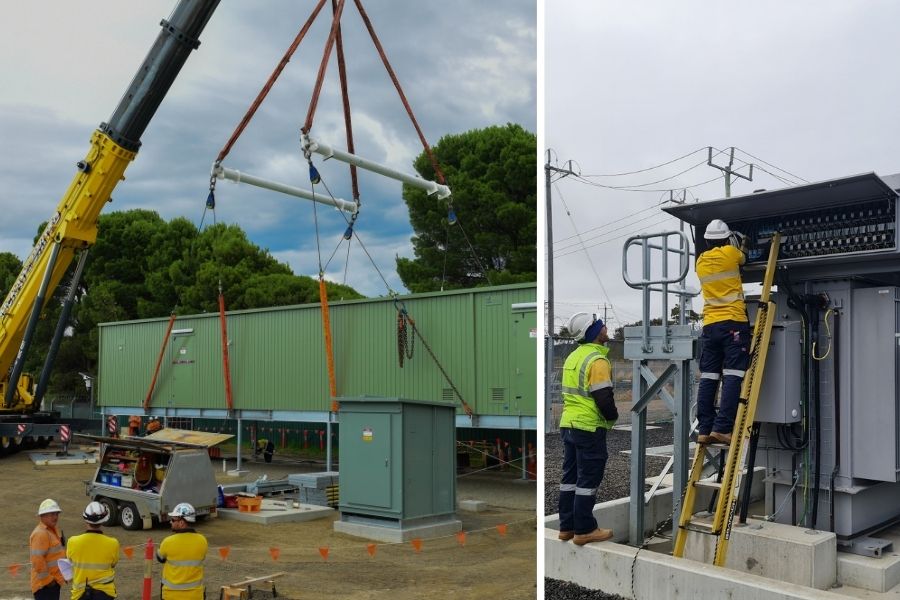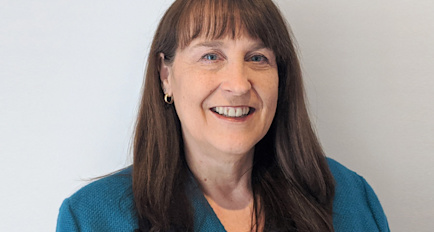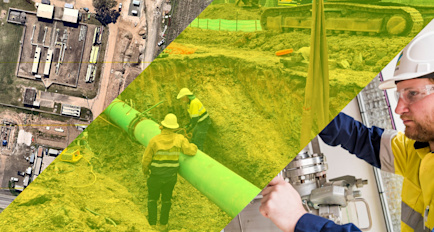A REFCL is a network protection device installed within electrical substations and on the electrical network to limit fault currents. REFCL technology is able to detect when a power line has fallen to the ground and quickly reduce the voltage on the fallen line.
The Victorian Bushfires Royal Commission (VBRC) found that some of the 2009 fires were ignited by faulted power lines. A taskforce established by the Victorian Government later identified REFCL technology as an effective way of reducing the risk of 22kV power lines from starting bushfires.
Following successful trials of REFCL technology, the Electricity Safety (Bushfire Mitigation) Regulations 2013 were amended in 2016, mandating that electricity companies achieve the “Required Capacity” of meeting specified voltage, current and thermal energy dissipation limits
The Powerline Bush Safety Taskforce (PBST) estimated the relative reduction in the likelihood of multi-phase power lines starting bushfires to be approximately 70 per cent with the installation of REFCLs.
What does this mean for Jemena?
Jemena owns and operates one of five licensed electricity distribution networks in Victoria, covering more than 950km2 of north-west greater Melbourne.
It is a legislative requirement that Jemena ensures that all distribution lines originating from Coolaroo Zone Substation (COO) meets the technical performance requirements specified for voltage current and thermal energy dissipation limits. These requirements had to be met by 1 May 2023.
This means Jemena has to install REFCL devices – currently the only technology that can achieve this performance standard – and partnered with Zinfra to deliver its design and construction.
For the substation and distribution works for Jemena, Zinfra’s Project and Infrastructure (P&I) team engaged civil subcontractors, Zinfra Overhead & Underground crews, and design subcontractors.
The overall scope of the project included the redevelopment of the Coolaroo Zone Substation, feeder hardening works, feeder balancing works, Kalkallo Mitigation and Distribution Works, Coolaroo Zone Mitigation and Distribution works, and REFCL Operating and Maintenance Procedure works. Zinfra began construction on the package of works in October 2021.
Delivering on promises
Jemena and Zinfra maintain a strong relationship and have previously worked together on a number of projects. In December 2018, the two companies entered into the Jemena Electricity Services Agreement (JESA), outlining the services required from Zinfra to build and maintain Jemena’s electricity assets in Victoria.
Zinfra P&I provided a fixed price for the REFCL works under the JESA contract. Zinfra assessed Jemena’s scope of works from a tender perspective and approached subcontractors for design and civil works. Zinfra did its own estimation on the electrical installation and testing and commission works, and built up a risk adjusted tender price, which was then submitted to Jemena.
Project Manager, Nicholas Korlos said Zinfra’s approach to relationship management with a focus on communication, safety and innovation complements our technical aptitude, setting Zinfra apart from other providers in the market.
“Throughout the course of the project we would hold regular meetings with Jemena to ensure alignment on safety, quality, and timeliness of construction. Effective collaboration and open communication form a foundation for successful projects, and more importantly, trust in partnerships,” Mr Korlos said.
“Nonetheless, the backbone of this trust was formed by taking action on what we promised. We delivered on what we promised to do.”
Confident capabilities
While Zinfra benefits from having an established relationship with Jemena, the company had the added benefit of having previously undertaken REFCL works across the AusNet network, proving its capability in delivering a project of this kind.
“Zinfra has previously undertaken REFCL works across the AusNet network. While REFCL isn’t a one size fits all system, we pride ourselves on having a strong team that carries a wealth of knowledge in this space. This allowed us to implement valued engineering proposals with confidence,” Mr Korlos said.
Every substation is different and requires a custom installation, and Mr Korlos said Zinfra was able to provide innovative solutions for Jemena.
Zinfra introduced Jemena to a new way of operating by making the control building – the switch room in the substation where all of the protection and control equipment is – transportable, manufacturing it offsite, factory testing it offsite, then transporting it onsite and installing it using a large crane.
Mr Korlos said Jemena traditionally builds its control rooms as brick buildings and has them constructed on site. This can create complications because of the construction work and initial testing happening on site.
“The interface risk that you have when you’ve got people constructing a building on site, while other people are testing or commissioning in a relatively tight space, it just forms points of conflict that you want to avoid at all costs.
“Separating the two is the best way to go forward, and everyone agreed on that.”
Zinfra presented examples and construction methodologies from past projects to ensure that the use of the modular control rooms aligned with the relevant standards and regulations. Mr Korlos said that given the hazards associated with working within zone substations, anything in these types of projects that reduces risk is hugely beneficial.
Zinfra also worked closely with the standards team, providing examples of previous projects where they had used transportable control buildings to ensure they all aligned with the relevant standards and regulations. It was a relatively new approach in Jemena’s space, but one that is now being adopted in future projects and plans.
Safety built into Zinfra’s DNA
The REFCL installation involved a full team effort for Zinfra, and all personnel committed to its safety and success. Mr Korlos said at the project’s peak, up to 70 people could be on site between all of Zinfra’s commissioning and construction crews.
“We had a very strong safety record over the past two years. In the zone substation there were zero lost time or medical treatment injuries; a great safety performance.” Mr Korlos said there was a simple reason for the strong safety result.
“It’s the fact that we care. It’s no coincidence that these two words can be found in our group pillars alongside being better together and being accountable,” Mr Korlos said.
“We strive together to achieve great outcomes, we value safety and wellbeing for ourselves, our community, and the environment. We accept our responsibility to deliver these commitments. I believe these values are a reflection of the DNA of the team.”
Digging deep on a critical project
Electricity projects are always critical to the nation, but for the REFCL project – designed to reduce bushfire risk – was something closer to the hearts of the Zinfra team.
“Projects in the utilities industry come about for a myriad of reasons. Some are for expanding the supply of critical infrastructure to our ever-growing population, others are for simply upgrading or repairs of the existing network. All are necessary and of equal importance, and they require 100 per cent of our efforts,” Mr Korlos said.
“However, I think the whole team agrees that given an opportunity to work on a project that involves the reduction of bushfire risk allows us to dig a little deeper. After all, we love this country, we care for this country, and we need to protect the place that we call home.
“I’m proud to say that Zinfra Projects and Infrastructure successfully achieved the REFCL upgrade project practical work milestone on the 21st of April 2023. The remnant works on the distribution side, which were predominantly network upgrades, augmentations, and capitalisation of new assets were largely completed by the end of 2023.
The second and equally critical part of this project was the works required on the distribution network. To meet REFCL performance requirements, major reconfiguration works were required on 22kV distribution feeders coming out of several zone substations in and around the Coolaroo/Broadmeadows areas. This consisted of significant amounts of civil and electrical works to allow for reconfiguration of overhead systems and construction of underground feeders.
Mr Korlos said Jemena and Zinfra management and the field teams collaborated, shared their expertise, and that ultimately allowed the project to stay on course.
“I really believe the project truly was a testament to what we can achieve together. Success is no accident. It’s born from hard work and perseverance.”




